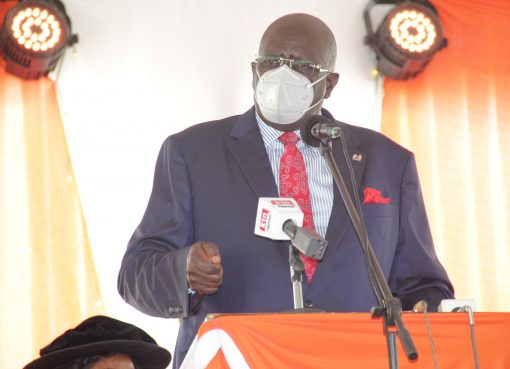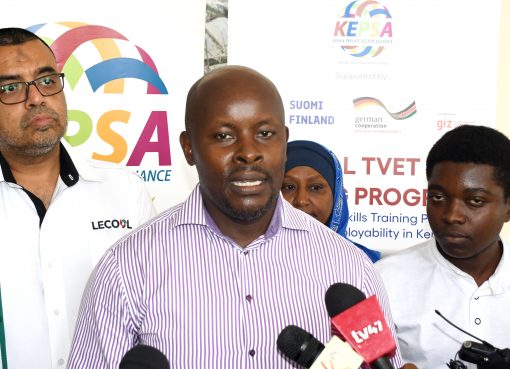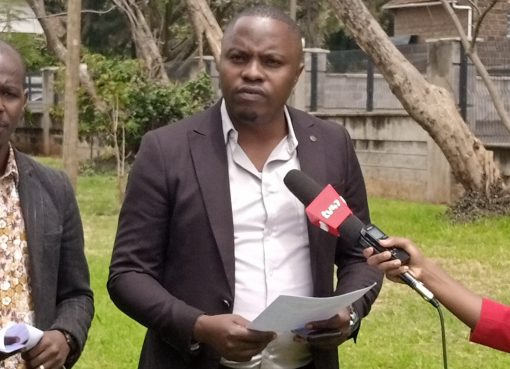Egerton University is promoting a new technology of preserving vegetable products pioneered by the university in partnership with Mukebo Self-Help Group.
According to its innovators, the technology, dubbed solar drier, will go a long way in curbing food shortages, avoiding a glut in the market, fighting food insecurity and encouraging farmers to venture into agribusiness.
The solar drier is a simple greenhouse-like structure that uses solar energy to dry farm produce which is later packed and stored for future use or sale.
According to Senior Technologist at the Department of Crops, Horticulture and Soil Sciences Dr Tom Owino, almost 90 per cent of farmers in the country depend on rain to grow their crops which negatively affects supply.
Owino said that farm products flood markets during the rainy season leading to low prices. The opposite, he said, happens during dry spells.
“This is brought about by the majority of farmers depending heavily on rain to grow their crops. Our new technology tries to combat this menace as well as turn small-scale farming into agribusiness,” he said.
Owino said that farmers can use solar dryers to preserve vegetables and sell them when prices are high.
Speaking at the Agricultural Society of Kenya (ASK) trade fair in Nakuru where he showcased the solar vegetable drier, the innovator disclosed that the institution’s aim is to help farmers turn their farming into businesses.
Solar dryers are made of ultraviolet-treated poly sheets, the same ones used in making greenhouses, while raised shelves inside the units are made of wood.
“Poly Sheets prevent harmful rays from entering the solar drier,” he said adding that the nets, are good for curing farm produce as they facilitate circulation of fresh air which is essential for drying crops.
“Our farmers are still suffering from huge post-harvest losses even after all the efforts done by experts in building capacity due to the lack of available, low cost solar drying technologies and infrastructure to support good manufacturing practices,” Owino said.
“Farmers who own the drier can offer drying services to colleagues at a fee, while the Youth can embrace this business idea and create jobs,” he said.
Owino said the technology can be used to curb shortage and avoid a glut, adding that the technology can help reduce dependence on crops such as maize.
He explained that solar-drying saves labour since the vegetables can be left in the dryer overnight, yet the quality of the product is better in terms of nutrients, hygiene and colour.
“Furthermore, solar-drying improves family nutrition because the vegetables contain higher quantities of vitamins, minerals and fibre than the ones dried under the sun.
“Additionally, solar-drying boosts the safety and quality since the dryer can be operated at relatively low temperature (60 to 70 degrees Centigrade), which does not destroy the nutrients,” the Don explained.
The technology targets small scale farmers in 14 counties within Rift Valley Region where residents struggle with the challenge of storage of vegetables including cabbage, kales and indigenous produce.
“Produce can last for long periods when preserved and packaged using our invention. With intense heat from sun rays, sliced vegetables or fruits placed in the enclosed trays lose moisture content without losing their colour and flavour,” he added.
Mukebo Self-Help Group Chairman Mr Samuel Ooko noted that agricultural producers incur huge losses during periods of high supply due to low prices offered and lack of storage that lead to wastage.
“With the driers, farmers can preserve their produce and package them for sale during periods of high demand to generate better income,” said Ooko. “This is a wealth-creating innovation which farmers should embrace in order to rise above poverty as well as create jobs,” he added.
The chairperson observed that farming of horticultural crops across the country does not give farmers maximum returns largely because of post-harvest wastage.
He said, “To enjoy the vegetables, one needs to soak them in cold water for 15 minutes, allowing them to rehydrate and regain their original texture and flavor. Once rehydrated, the vegetables can be boiled or fried according to personal preference.”
Ooko said blanching is necessary before solar-drying. It involves boiling the vegetables briefly, removing and plunging them into iced water. Alternatively the vegetables can be placed under cold running water.
According to the chairperson, blanching is an essential step in processing vegetables. It inactivates the endogenous enzymes contained in the vegetables, reduces microbial load, softens and shrinks product for ease of packaging.
Ooko said the blanching process is time and temperature dependent to avoid destruction and loss of heat sensitive nutrients and to attain acceptable levels of microbial loads to enhance nutritive quality of the vegetables
He said on average, farmers especially those who cultivate vegetables lose up to 40 per cent of their produce due to perishability. They ensure that the method of preservation does not affect the nutritional content, aroma and even colour of the vegetables.
“The heat energy which is used to dry the vegetable matter is well controlled to an extent that all that is lost from the matter is water and not vitamins, colour or its natural aroma,” said Ooko.
He said after drying, the commodities can have a prolonged shelf life of up to one year.
The matter which is being dried, according to the chairperson, should be dehydrated until it has moisture content at below 14. The percentage loss of water usually goes to between 70 and 90 for the drying matter to acquire the required international standards.
Traditionally, preservation by way of dehydrating was done under direct sunlight, but the system had serious shortcomings on nutritional content and hygiene.
“In most cases, drying would take over three days, something which would compromise quality and even create room for contamination. But with the drier, a farmer needs only three hours to dry his produce,” said Ooko.
Food security remains one of the crucial areas which Kenya is grappling with. Hidden hunger is very prevalent owing to many underlying challenges around food and dietary needs of the population.
Hidden hunger is a form of under nutrition that occurs when intake and absorption of vitamins and minerals (such as zinc, iodine, and iron) are too low to sustain good health and development.
Vegetable intake plays a critical role in human health and should be an unavoidable companion in diet.
Kenya, like many other African countries, relies on maize, rice and wheat as primary sources of calorie-dense food which is more often accompanied by vegetables to complete a meal cycle.
However, access to sufficient, nutritious and affordable vegetables is not a guarantee for most families. Apparently, sub-Saharan Africa is the lowest in regard to vegetable consumption on a global scale due to insufficient supplies.
This deficit is hampered by among other factors, post-harvest loss and waste, unreliable rainfall to sustain farming, climate related hostilities and unreliable skills on vegetable preservation. Such challenges negate efforts employed to fight hidden hunger. Study shows that two in three women of reproductive age worldwide are affected by vitamin and mineral deficiencies (hidden hunger).
According to experts, these numbers are even higher if all populations were to be incorporated.
Annually, the average African adult should consume a recommended minimum amount of 76 kg of vegetables, according to the Food and Agriculture Organization, a ratio that falls short due to the above-mentioned factors (consumption is at below 20kg), the lowest of all regions in the world.
In this perspective, Ooko observed that appropriate interventions should be adopted to promote vegetable availability between seasons even as the world lurches from one crisis to another – climate related uncertainties, constrained economic performance, pandemics and wars amongst others.
As a result, he added that vegetable preservation should be an urgent agenda item in all dialogues on food security.
While emphasis is more often placed on maize, rice, wheat, and now the millets and tubers, vegetable preservation should be a matter of urgency to curb the already spiraling hidden hunger known to impede normal growth and development of children, expectant mothers and adolescents.
“Even though there is a steady demand for indigenous vegetables among clients owing to the notable nutritional properties they contain, most restaurants, hotels and food joints are unable to meet their clients’ demands during prolonged dry period when their cultivation is lowest,” he observed
The Chairman indicated that vegetable dehydration is one such solution that addresses post-harvest loss and waste and ensures continuous availability of healthy leafy vegetables in between seasons.
“With application of appropriate skills and technology, farming communities can tame the perennial menace of vegetable loss as consumers stock sufficient vegetables to cushion them against lean seasons,” he noted.
Ooko stated that consumption of dehydrated vegetables promotes social, economic and environmental benefits and makes good sense to popularize the product. He added that it increases farmers’ income, reduces hidden hunger and environmentally, it reduces methane gases that emanate from vegetable waste.
By Anne Mwale and Merceline Khaemba





